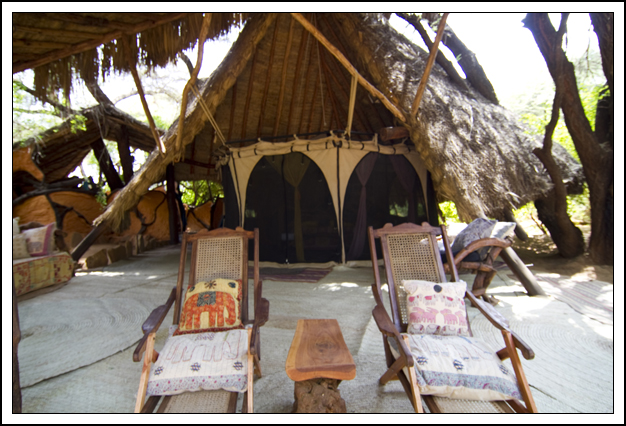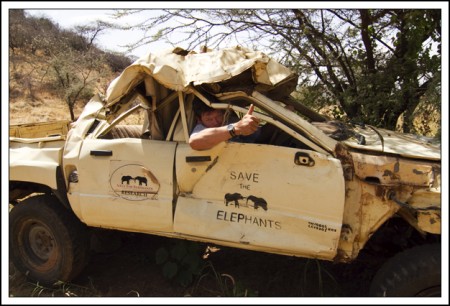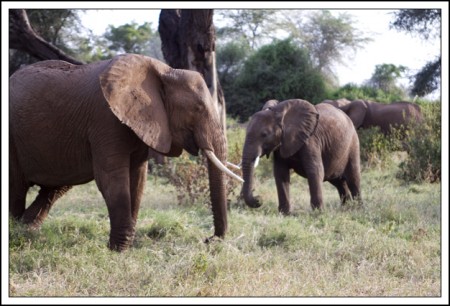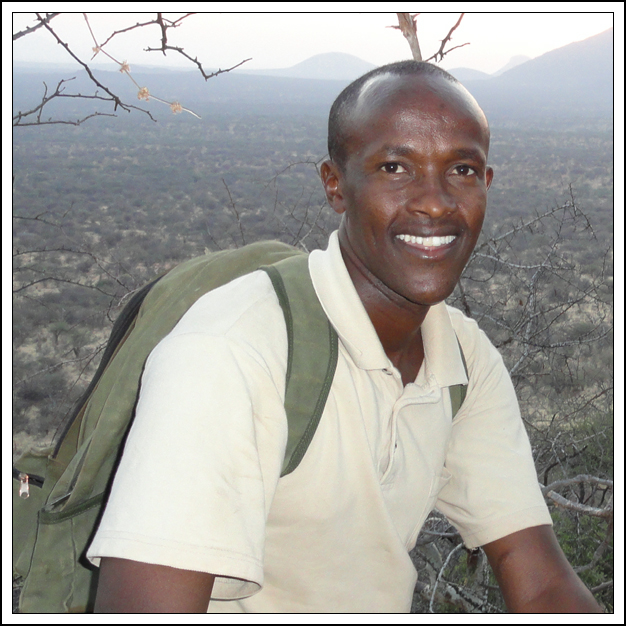I have given short shrift to Oria Douglas-Hamilton (nee Rocco), the other half of the Save the Elephants/Elephant Watch Camp team. Oria grew up along the shores of Lake Naivasha where, of course, the wildlife filmmaker Joan Root lived and was murdered five years ago this January. As Oria writes of herself, in the early ‘70s she had “a whirlwind courtship carried on via small aircraft and irregular messages” with Iain before the two married and moved to Lake Manyara in Tanzania where Iain was studying elephants.
Everyone I talked to about her told me she was her own force of nature and just as much a spitfire as her husband, and I’d have to agree with that. She’s a very strong woman, as one has to be to survive out here and run a successful business (or several of them; in addition to running Elephant Watch Camp, Oria also runs Olerai House and Sirocco House on the shores of Lake Naivasha).
What I have found most amazing during my stay at Elephant Watch Camp is the realization that the whole thing was destroyed back in March and Oria had to rebuilt it from scratch.
From a press release by Save the Elephants on March 4: “Early this morning Save the Elephants research facility and Elephant Watch Safari Camp located in Samburu National Reserve, Kenya, were completely destroyed by unexpected flooding of the Ewaso Ngiro River, along with seven other neighbouring lodges. At approximately 5 a.m. this morning, a wall of water akin to a tsunami surged through Elephant Watch Camp, catching tourists and staff unawares and sweeping away tents and facilities. It has been confirmed that camp owner Oria Douglas-Hamilton and guests managed to escape to safety by climbing to higher ground. Several members of staff were trapped in trees until the water subsided later today.”
Yet here we are and the camp looks wonderful. The photo above shows my room which, like all the rooms, is built around a tree (I have to remember to duck my head when using the loo as a very low branch cuts directly through the entry way). A thatched roof covers a sandy area covered with sisal mats and behind that is the tented bedroom with mosquito netting. What you can’t see behind the netting are the colorful streams of fabric hanging from the ceiling like billowing sails “to celebrate,” as Oria puts it, “the soul of nomads.”
Oria is very insistent that everything be as ecologically green as possible and so there is solar heating of the water and solar electricity and the lights in my tent use rechargeable batteries. Although there’s a river just feet away from the tents, the water is too muddy for anything other than damping down the sandy soil and washing. Drinking water, as well as water for washing and showering, comes from a deep well that was dug for the camp. When you want to take a shower, you let someone know and a bucket of solar-heated hot water is brought to your tent and poured into a colorfully-decorated pail that has a shower nozzle attached to the bottom. No lollygagging here, for when the water is gone, it’s gone. Which can be a real problem if you haven’t gotten all the soap out of your hair. But it certainly makes you appreciate how precious water is in this dry part of the country.








Recent Comments